The typical dances of the Peruvian highlands are a rich and diverse cultural manifestation that reflects the history, traditions and worldview of the Andean communities. These dances are a unique fusion of pre-Hispanic indigenous, Spanish and African influences, which have been kept alive over time through generations.
The Peruvian Sierra, with its vast mountainous landscape and largely indigenous populations, is home to a wide variety of dances that vary from region to region, each with its own style, rhythm and meaning. These dances are an integral part of religious festivities, ceremonies, agricultural rituals and community celebrations, where they are passed down from generation to generation as a way of preserving cultural identity and strengthening community ties.
The dances of the Peruvian highlands have ancestral roots that date back to the pre-Columbian civilizations that inhabited the region. These dances were a fundamental part of daily life and were closely linked to religious beliefs, agricultural practices and natural cycles.
With the arrival of the Spaniards in the 16th century, indigenous dances were fused with elements of European culture, giving rise to new artistic expressions. During colonization, many dances were adapted to incorporate Catholic religious themes, becoming part of Christian festivities and celebrations.
Over the centuries, the dances of the Peruvian highlands have evolved and diversified, influenced by social, political and cultural factors. Despite the changes, these dances have retained elements of their pre-Hispanic roots, such as the connection with nature, respect for the ancestors and the veneration of Andean divinities.
The dances of the Peruvian highlands are characterized by their colorful, energetic rhythm and cultural symbolism. Traditional costumes, adorned with elaborate embroidery and vibrant colors, are an essential part of these artistic manifestations, reflecting the identity and pride of each community.
The movements of the dances vary according to rhythm and theme, but usually incorporate gestures that imitate agricultural activities, such as sowing and harvesting, as well as representations of animals, gods and mythical figures of the Andean cosmovision.
The music that accompanies these dances is performed with native instruments such as the zampoña, charango, bombo, quena and more, creating melodies that evoke the mountainous landscape and spirituality of the region.
The costumes and masks used in the dances of the Peruvian highlands are an integral part of the theatrical and symbolic representation of these cultural expressions. The costumes are usually made with colorful fabrics and adorned with embroidery, sequins, mirrors and other decorative elements that reflect the cultural identity of each community.
The masks, handmade by local artisans, represent mythological characters, animals or religious figures, and are designed to convey emotions and characteristic features of each character. These masks can be simple or very elaborate, depending on the dance and the context in which they are used.

The poncho serrano is an emblematic garment of the traditional clothing of the Peruvian highlands. Made of alpaca or sheep wool, the poncho is a thick and warm layer that protects from the cold of the high mountains and is used by both men and women.
The design and colors of the poncho may vary according to the region and community, but they usually include geometric patterns and ancestral symbols that reflect the Andean cosmovision. In addition to its practical function, the poncho is also a symbol of cultural identity and belonging to a specific community.
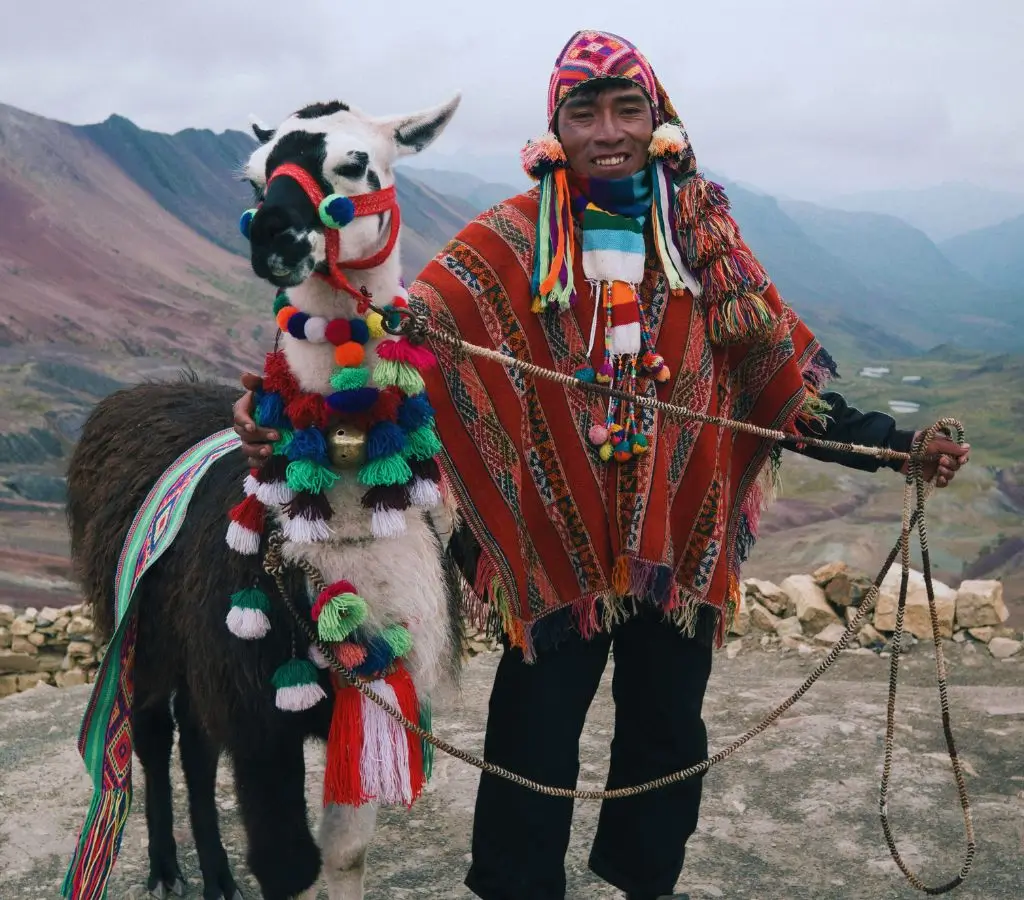
Hats, boots and other accessories are important elements of the traditional dress of the dances of the Peruvian highlands. The hats, made from materials such as straw or wool, vary in shape and size according to the region and the genre of the dance.
The boots, made of resistant leather, are a fundamental part of the dancers' costumes, providing protection and stability during performances. In addition, accessories such as necklaces, earrings and belts adorned with seeds, shells and precious stones complement the attire and add a touch of beauty and authenticity.
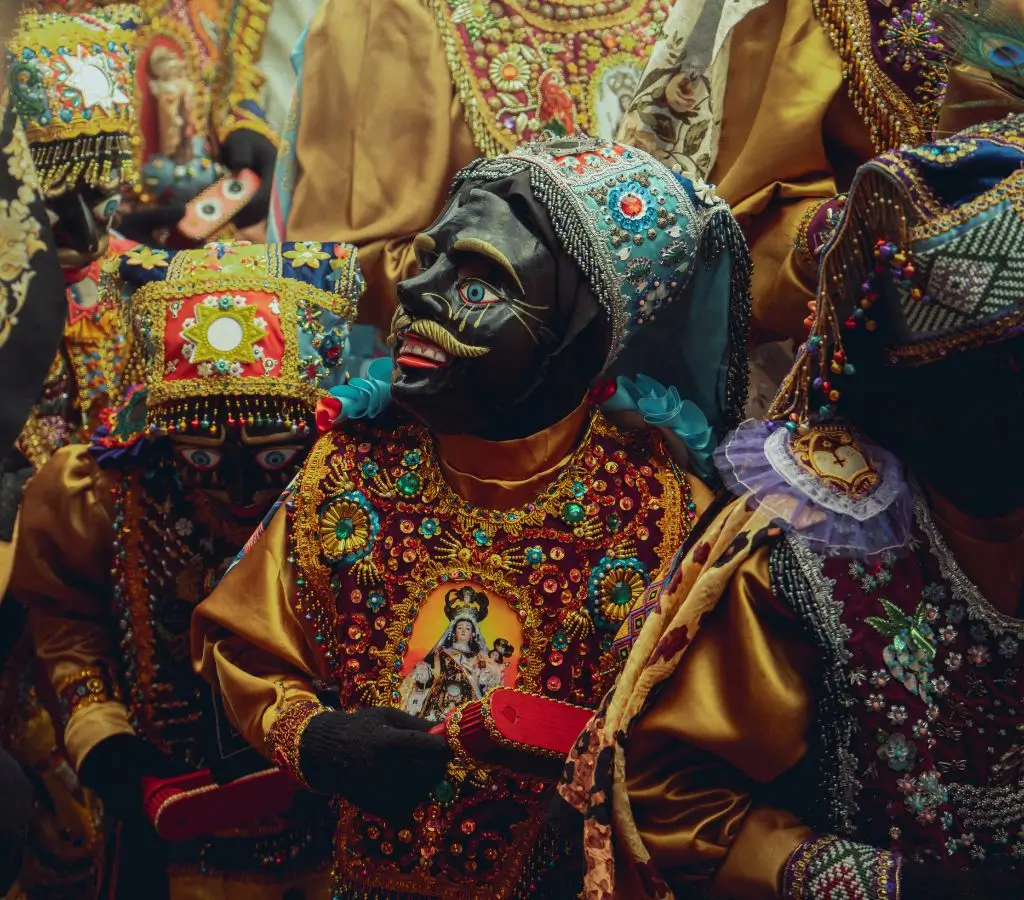
The Peruvian highlands are home to a wide variety of traditional dances, each with its own meaning and symbolism. Some of the most outstanding are:
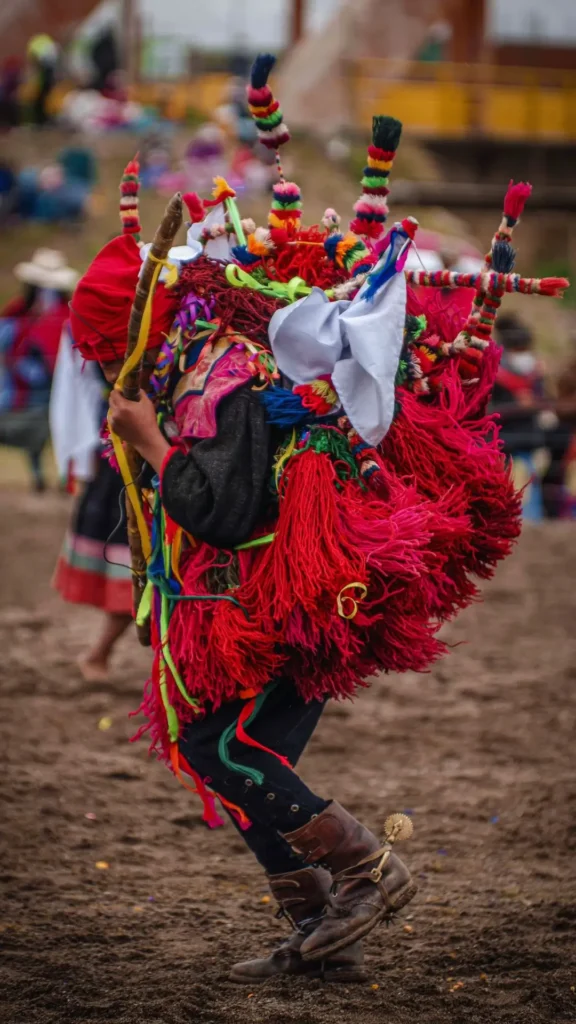
The huayno is a dance and musical genre originating in the Peruvian Andes that is characterized by its lively and melodic rhythm. Accompanied by instruments such as the guitar, charango, accordion and quena, the huayno is an expression of joy and celebration that is usually performed at festivities and community gatherings.
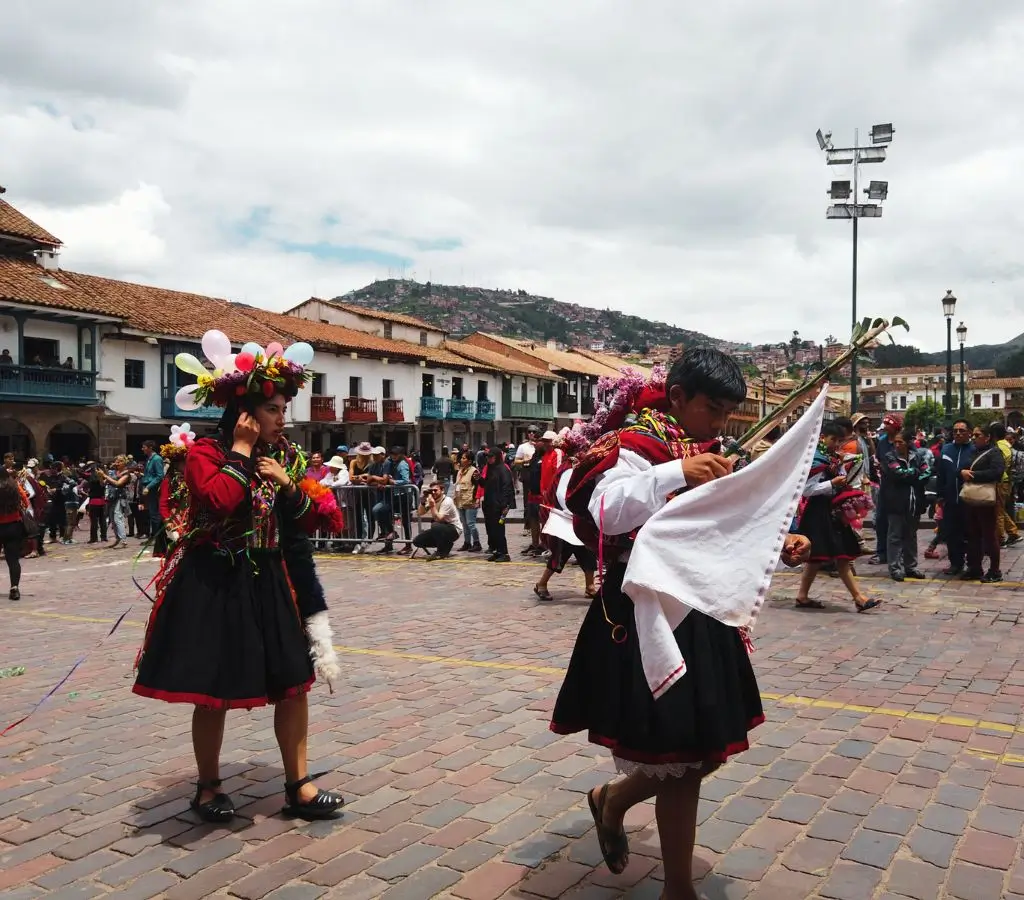
The Diablada originated in the Puna, is a ritual dance that combines religious and folkloric elements, representing the struggle between good and evil. The dancers, dressed in flashy costumes and devil masks, perform acrobatic and energetic movements while evoking the presence of supernatural beings and Andean divinities. It is danced especially on the feast of the Virgen de la Candelaria.
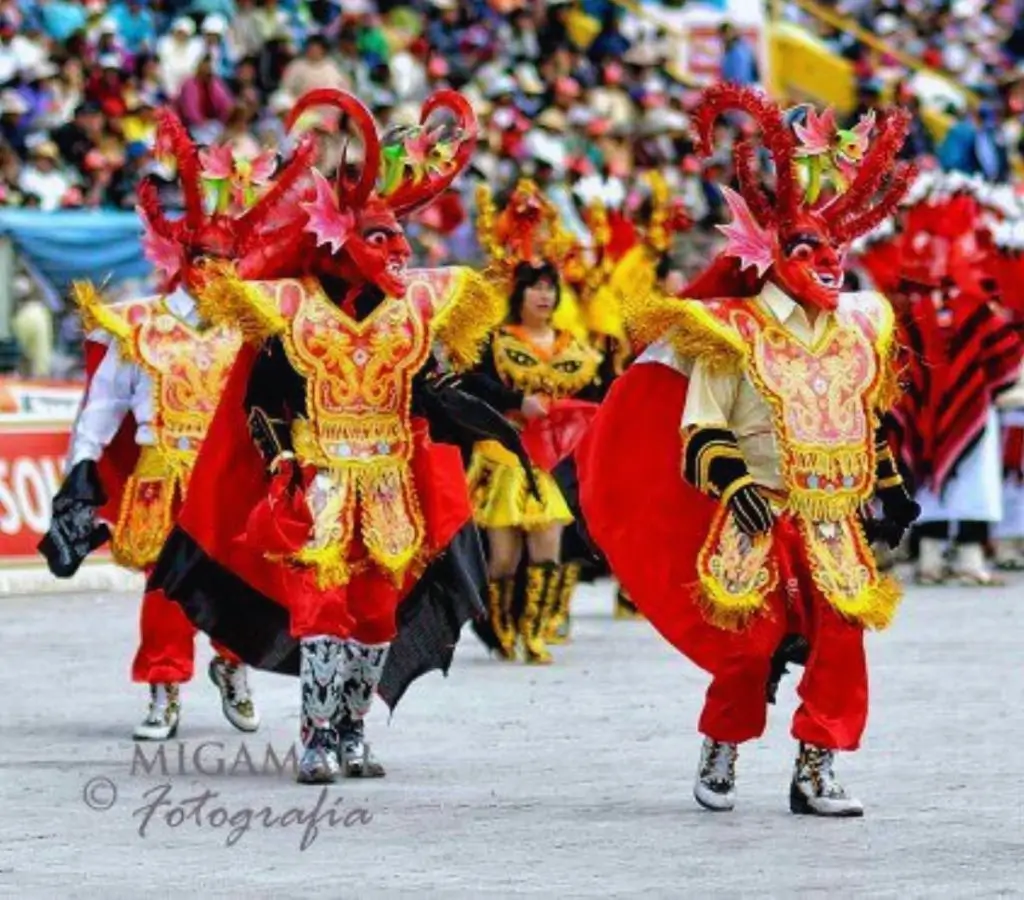
The Scissors Dance is a unique cultural manifestation practiced mainly in the Andean regions of Peru. The dancers, known as "tijereros", perform acrobatic movements to the rhythm of the music while holding metal scissors in each hand. This dance, which combines physical dexterity with mystical and spiritual elements, is considered Intangible Cultural Heritage of Humanity by UNESCO.
This dance is practiced in the regions of Ayacucho, Huancavelica, Apurimac and Lima, for them dancing this is like paying homage to the Apus or Andean gods, who according to Andean tradition lived in the mountains.
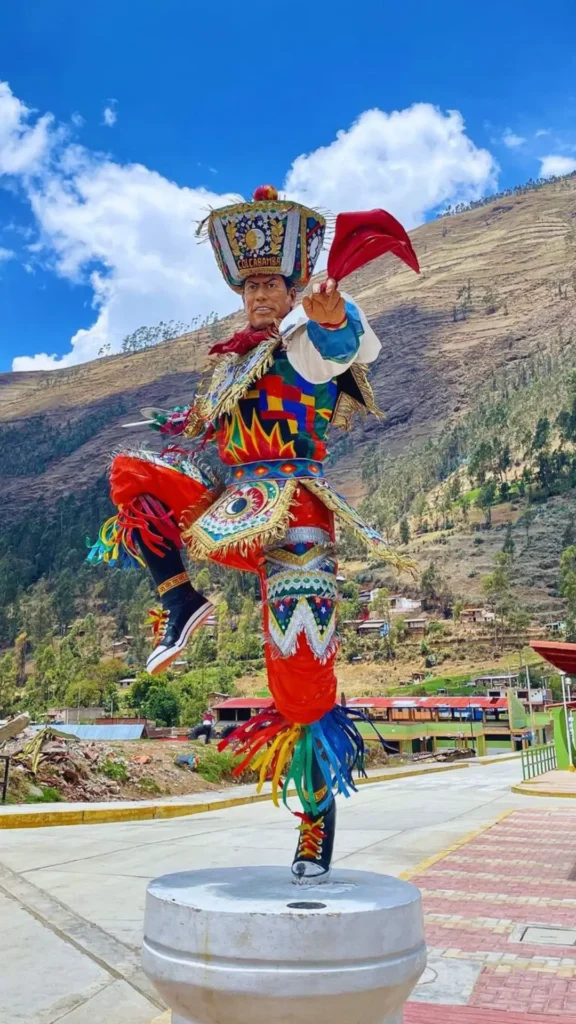
The Huaconada is an ancestral dance that takes place in the region of Mito, it was declared an Intangible Cultural Heritage of Humanity by UNESCO, here men imitate the flight of a hawk and represent it in this dance.
The men are dressed in costumes, with colorful stockings, capes and masks and the music that accompanies them is based on wanka rhythm instruments accompanied by violins, harp, saxophone and clarinets that give a spectacular sound to this dance.
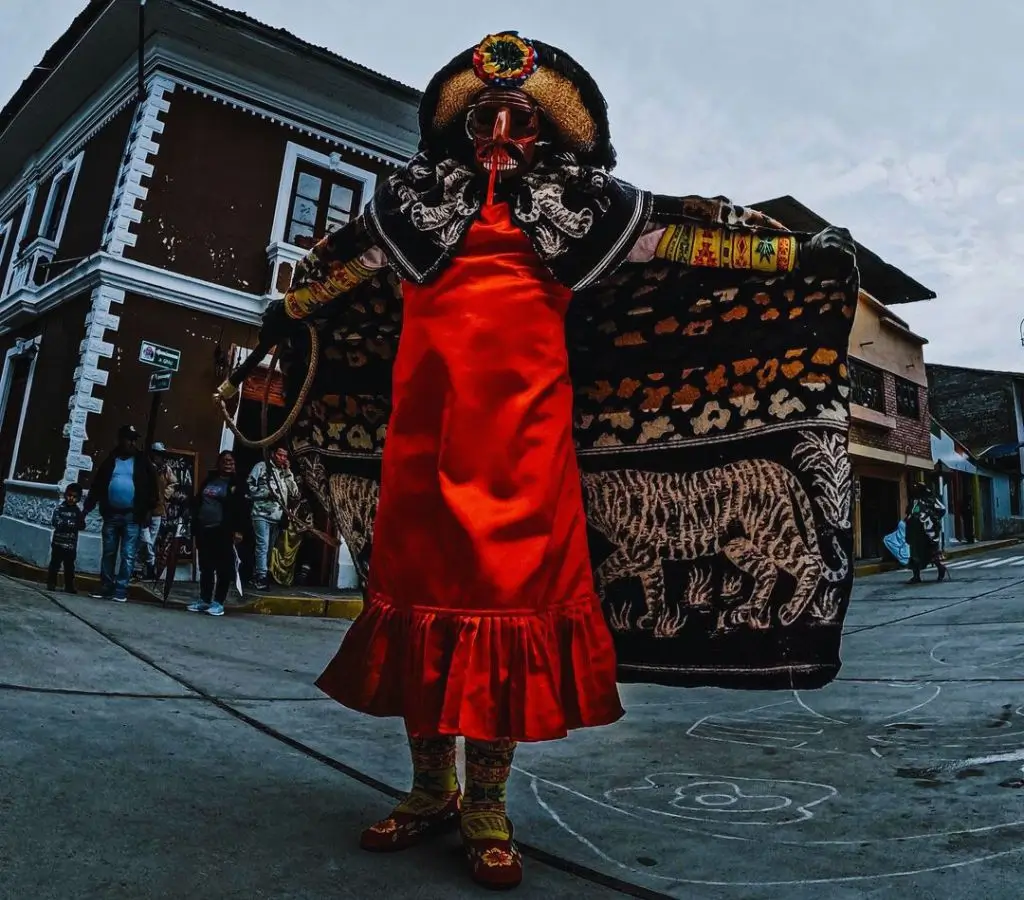
The Allpa Llankay is an agricultural dance practiced in the Andean regions of Peru as part of rituals of thanksgiving to the Pachamama (Mother Earth). The dancers, dressed in typical costumes and carrying agricultural tools, perform movements that mimic activities related to planting and harvesting, celebrating the fertility of the earth and the abundance of crops.
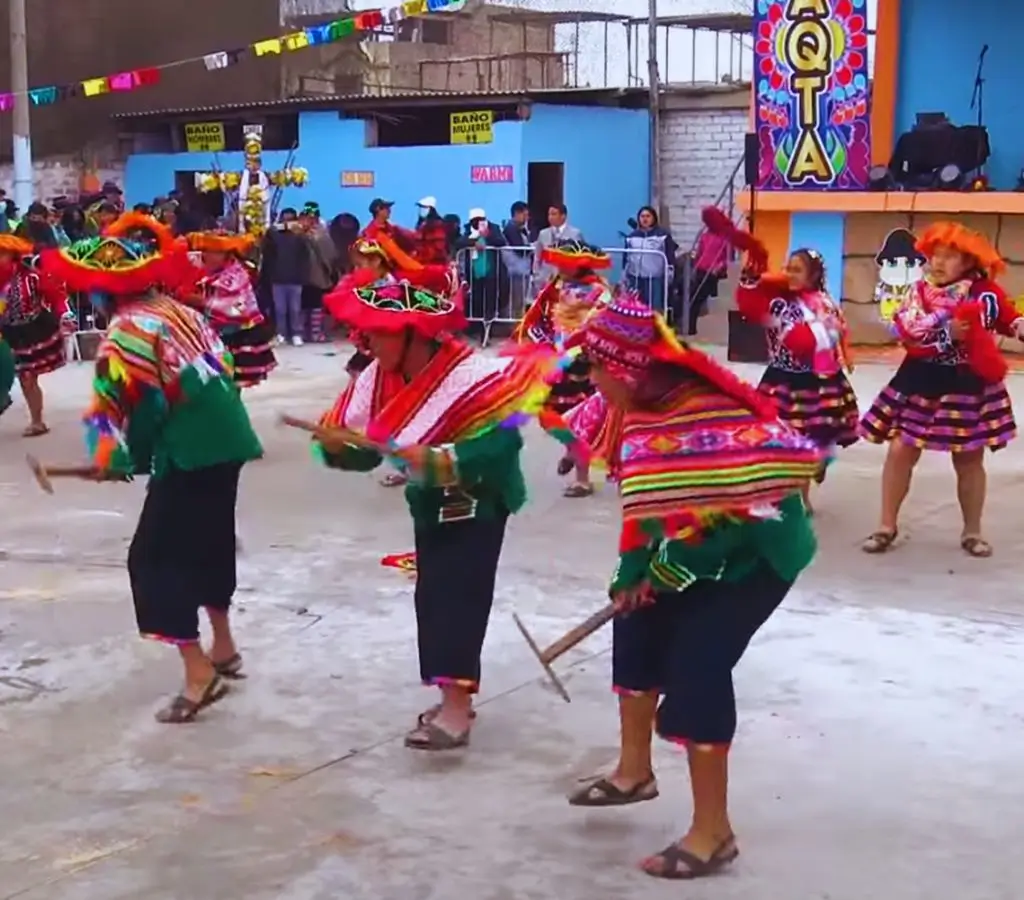
The Avelinos are a warrior dance that commemorates the resistance of the armies during the struggle in the War with Chile. The dancers, dressed in military costumes and armed with spears and shields, perform martial movements to the rhythm of the music, recalling the bravery and determination of the ancestors in the struggle for freedom.
Their clothing has a ragged appearance because their clothing will have strips of cloth of different colors as it represents the worn uniform, they also wear cloth masks.
Sara Kutipay is a ceremonial dance performed in the Cusco region and other Andean regions, and was performed during the time of planting and harvesting corn. The dancers, dressed in colorful costumes represent the community work, cooperation as it was done in the time of the Incas.
The dancers wear colorful costumes, the men carry an instrument used on the land, make offerings, and show all the work they do.
Cusco, one of the most emblematic and culturally rich regions of Peru, is home to a wide variety of typical dances that reflect the rich cultural heritage of the region. These dances, rooted in Andean history and tradition, are living expressions of the cultural identity of the people of Cusco.
The Qhapaq Negro is an emblematic dance of Cusco that represents the time of the Spanish colony and the indigenous resistance. Its movements are full of strength and energy, with marked pre-Columbian and European influences. The dancers represent the black slave and the slavery that lived in colonial times. They wear striking costumes, adorned with details that symbolize the struggle and resistance of the native peoples, just as their songs express devotion and suffering directed to the Virgin.
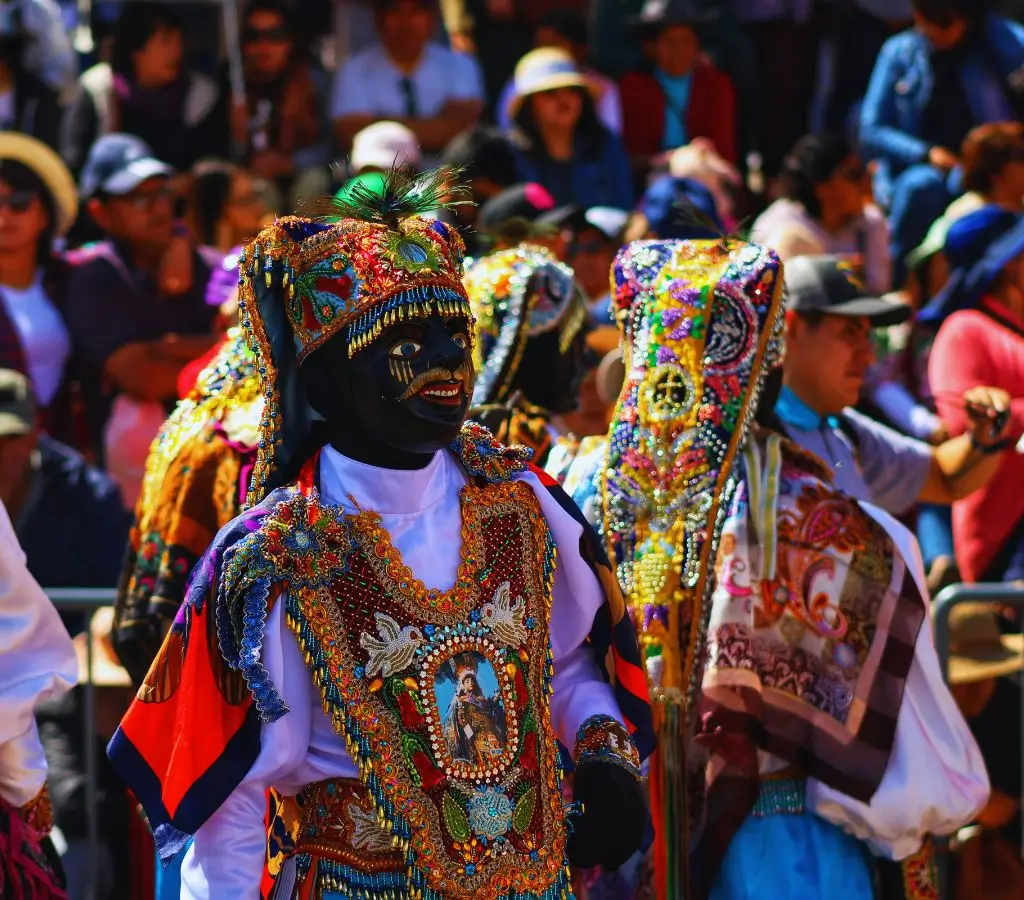
Contradanza is a mestizo dance that combines indigenous and Spanish elements. It is characterized by its rhythmic and elegant steps, accompanied by lively and vibrant music. The dancers usually form couples and perform coordinated movements, creating a visually impressive spectacle.
The Contradanza is a cultural manifestation that reflects the fusion of cultures in Cusco, at the same time reflects the field work that those times and they recreate it in a parody and that is what is seen today.
The Wallata is a traditional dance that celebrates fertility and abundance. Its movements imitate the graceful flight of the wallata bird, while the dancers wear colorful costumes adorned with feathers and embroidery. This dance is an expression of gratitude to the earth and nature, highlighting the close relationship between the people of Cusco and their environment.
The Cholo Qorilazo is a dance that represents the joy of the man to have with him his wife and his horse, also this dance is characterized by its strength. The name Qorilazo comes from two Quechua and Spanish words, qori which means gold and lazo comes from the Spanish, being called "cholo with gold ribbon".
In this case the men wear a plaid shirt, a red poncho, a thick belt and some extra clothing, and the women wear a red, green or blue skirt (no definite color), a vest that matches the skirt and a hat that matches the clothing.
The Carnaval Cusqueño is a festivity full of joy and color, which includes a variety of traditional dances. During this celebration, the streets are filled with music, dances and parades, in which Cusqueños express their cultural identity and festive spirit. This dance symbolizes youth, fun and elegance,
Here the men wear a white shirt, black vest and a black coat, along with a black shoe and pants that make a set with all the clothing, and women wear a skirt that can be red, blue, light blue, accompanied by a hat and a white bulsa, all together.
We will answer some of the most frequently asked questions:
The most representative dance of the Peruvian highlands is the Huayno, a cultural expression that has become deeply rooted in the communities of the region. Its joyful and melodic rhythms, accompanied by lyrics that speak of love, nature and daily life, make it a symbol of Andean identity. The Huayno is danced on various occasions, from religious festivities to family celebrations, and its presence is omnipresent in the lives of the inhabitants of the Peruvian highlands.
The scissors dance has its roots in the regions of Ayacucho, Huancavelica and Apurimac. It is believed that this dance is more than a thousand years old and was linked to religious and ritual practices of the ancient inhabitants of the region.
The dancers of the scissors dance perform acrobatics and complex movements to the rhythm of traditional Andean music, while holding metal scissors in their hands. This dance is considered a manifestation of cultural and spiritual resistance of the Andean peoples.
The Huayno is characterized as a dance and musical genre that reflects the joy and feeling of the Andean people. Musically, the Huayno is accompanied by instruments such as the guitar, violin, mandolin and charango, among others.
Its melodies are generally cheerful and catchy, with marked rhythms that invite to dance, it is distinguished by circular and elegant movements, where the dancers move in pairs to the beat of the music. The movements are usually smooth and fluid, with simple steps but full of grace and expressiveness.


